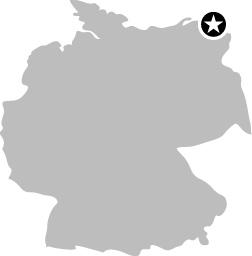020
Peenemünde Historical Technical Information Center, Peenemünde, Germany
![]()
The Fieseler Fi 103 and the A-4
In the history of rocketry, places like the Kennedy Space Center (Chapter 94) or White Sands Missile Range (Chapter 106) garner all the attention, but the roots of rocket science can be traced to a spot three hours north of Berlin, on the German coast at Peenemünde. It was at Peenemünde during World War II that Werner von Braun and others worked to perfect rocket-based weapons and launched the first rocket into space.
Two major weapons came out of Peenemünde: the Fieseler Fi 103 (better known as the V-1, or doodlebug), and the A-4 (better known as the V-2).
The V-1 was a comparatively simple rocket fired from a sloping steam-powered launcher. It consisted of a pulse jet engine (see sidebar) and a simple guidance system that steered the V-1 until it was close to its target. The distance to the target was calculated with an anemometer in the nose, which drove a counter counting down to zero. The counter was set so that it would reach zero just before reaching the intended target, based on the prevailing winds and speed of the weapon. When the counter reached zero, the weapon’s controls would jam, sending it into a steep dive in which the engine would ...


